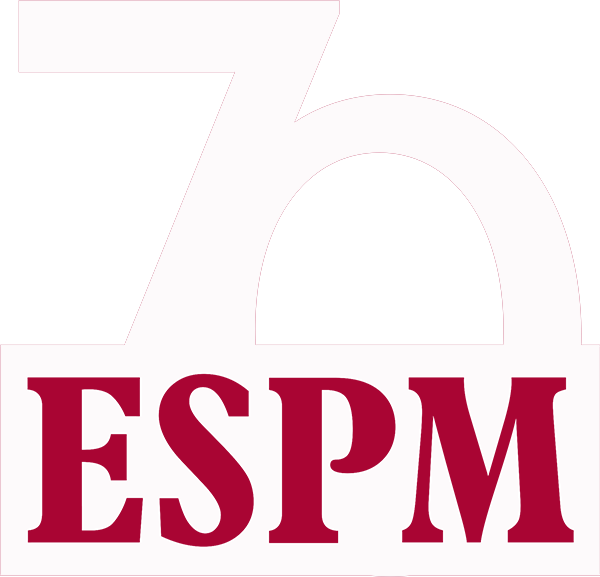Dynamic Trilha Pós-graduação
Design de Informação e Interação
Live EAD
Live EAD
- Início do curso: 09/10/2023
-
Quando acontece:
- Dias da semana: Às segundas-feiras
- Período: Noturno
-
Carga horária: horas
- Live EAD
Selecione as preferênciasdo curso
INscreva-se
Selecione a opção do curso para continuar
Inscrições até 4 dias antes do início das aulas.
*A validação da matrícula está condicionada ao envio do diploma ou certificado de conclusão (com a data da colação de grau) e cópia do RG ou CNH válida.
Sobre o curso
- Área Temática: Consumo e Experiência do Consumidor
- Foco: Tático
- Nível de complexidade: Intermediário
- Como consolidar as estratégias de navegação no desenvolvimento de fluxos de interação.
- Como consolidar as decisões e estratégias de Arquitetura de Informação através do desenvolvimento dos fluxos de interação.
- Selecionar a metodologia adequada, bem como entregáveis, para a prototipação do fluxos de telas.
- Apresentar conceitos atualizados como user onboarding, churn e novas formas de interação.
- Definir os fluxos de interação a serem prototipados.
- Definir os principais artefatos de tela e estrutura de menus.
- Integrar o design de informação com às demais demandas do projeto.
Documentos obrigatórios para a matrícula
- Diploma ou certificado de conclusão (com a data da colação de grau)
- Cópia do RG ou CNH válida
*No ato da inscrição será necessário o upload dos documentos acima.
No caso de não recebimento da documentação, o processo seletivo não será concluído, impedindo a efetivação da sua matricula.
Para quem se destina?
- Pré-requisito
- Atuar ou ter como objetivo de carreira a atuação como líder, consultor, especialista ou coordenador em áreas de Design, Design de Produto, UX/UI Design, UX Research, CX ou gestão de produtos digitais em empresas e organizações de qualquer porte, incluindo startups, ou ainda como consultor independente em negócios digitais. O curso também oferece uma nova perspectiva para profissionais de setores e carreiras tradicionais que desejam um conhecimento diferencial e estratégico em projetos digitais. Necessário inglês técnico/instrumental.
O que você vai aprender
Princípios e técnicas de prototipação e implementação de estratégias de informação visual e interação. Especificação de telas e fluxos, consolidação da navegação e apresentação da informação. Aplicação de princípios da Gestalt e impactos da atomização do design. Modelos Mentais e Conceituais no Design de Interação. Interfaces de voz, funções e conceito/construção de design system.
- Entender o design como uma “entrega de valor”para além da simples funcionalidade de produtos e serviços.
- Compreender a relação entre design, navegação e hierarquização de espaços
- Compreender o embasamento teórico e conceitual das leis de percepção da forma segundo a Escola Gestalt
- Conhecer e comprender as 4 primeiras Leis: Unidades, Segregação e Unificação e Fechamento
- Conhecer e comprender as 4 últimas leis – Leis: Continuidade, Proximidade, Semelhança e Pregnância da Forma
- Compreender o conceito de User Onboarding.
- Aplicar o conceito de User Onboarding nos fluxsos do projeto de Arquitetura da Informação e UX.
- Identificar e determinar as etapas do User Onboarding no Design de Informação
- Identificar, avaliar e utilizar modelos conceituais em interfaces digitais.
- Avaliar e utilizar metáforas no desenvolvimento de interfaces digitais
- Aplicar as decisões de hierarquização e categorização no design de informação.
- Definir fluxos e casos de uso a serem protototipados
- Definir o grau de fidelidade dos protótipos: baixo, médio, alto.
- Compreender o design de informação como etapa crítica e finalização tática do projeto de Arquitetura da Informação
- Compreender o embasamento teórico e conceitual das leis de percepção da forma segundo a Escola Gestalt
- Conhecer e comprender as 4 primeiras Leis: Unidades, Segregação e Unificação e Fechamento
- Conhecer e comprender as 4 últimas leis – Leis: Unidades, Continuidade, Proximidade, Semelhança e Pregnância da Forma
- Preparar a apresentação do projeto de Design de Informação para Stakeholders e Clientes.
- Priorizar a argumentação técnica em apresentações
- Realizar uma apresentação de escopo estratégico/ tático para Stakeholders e Gestores (decisores).
Quando acontece?
*Todas as datas estão sujeitas a modificações
Requisito mínimo para cursar a trilha de pós-graduação
Certificado
> O certificado será emitido em formato digital e será enviado através do e-mail cadastrado em até 45 (quarenta e cinco) dias após o final do curso.
> A expedição do certificado de conclusão do curso está condicionada à aprovação com nota mínima de 7,0 e frequência mínima em 75% da carga horária do curso, a ser registrada pelo professor.
> Após ser aprovado, o estudante receberá um e-mail e WhatsApp da plataforma BrasilOpenBadge informando que a ESPM emitiu um certificado digital. Basta acessar o link, emitir o badge e estará tudo pronto para compartilhá-lo nas redes sociais ou gerar o Certificado em papel.


O curso poderá ser cancelado e/ou adiado caso não haja o número mínimo de estudantes inscritos que justifique a abertura do curso, conforme estabelecido pela Coordenação. Caso o estudante não concorde com o adiamento do curso, deverá solicitar a transferência e/ou cancelamento junto a Central de Relacionamento através do e-mail [email protected] com até 24 horas de antecedência do início do curso.
Após o início do curso, caso o estudante não formalize seu pedido de desistência, não caberá qualquer restituição de valores pois será caracterizado abandono de curso e o mesmo deverá honrar com o pagamento das parcelas a vencer já que, os serviços ficaram à sua disposição.
Visite a ESPM
Participe da visita guiada e aproveite para esclarecer todas suas dúvidas.
FAQ
Perguntas frequentes
Ficou com alguma dúvida? Dá uma olhada aqui.
O projeto inicia com a ênfase na aprendizagem baseada em competências com duas principais vantagens: por um lado, cria uma conexão direta entre a validação acadêmica dos estudantes e o processo de recrutamento e seleção de empresas; por outro lado, permite que os estudantes criem trilhas totalmente personalizadas, de acordo com seus interesses profissionais e demandas.
O estudante poderá cursar badges da ESPM individualmente (e.g. Badge de Design Thinking), tornando sua experiência de aprendizagem totalmente personalizada, self-paced e de acordo com sua realidade financeira ou momento de carreira. Também contará com os Combos ESPM, que são conjuntos de badges sugeridos pela ESPM para formações específicas (e.g. Pós-Graduação em Big Data ou Design de Inovação e Estratégia).
Nisso, o estudante se transformará no protagonista da sua própria Jornada ESPM com a missão de acumular o máximo possível de badges ao longo da sua jornada. Afinal, não há limites de badges a serem conquistadas no lifelong learning.
Badges são credenciais digitais rastreáveis que representam a conquista do estudante no desenvolvimento da competência que tal badge representa. Os badges, que possuem rastreabilidade pública e certificação da emissora, são a versão contemporânea dos tradicionais certificados.
Os certificados representam a completude de um estudante frente a uma proposta pedagógica em uma área do conhecimento (e.g. Gestão de Projetos ou Marketing Digital), enquanto os badges representam a proficiência de um estudante no desenvolvimento de uma competência específica, inserida em uma área do conhecimento (e.g. Design Thinking ou KPIs de Mídias Sociais).
Os badges ofertados passam por uma revisão de abordagem pedagógica e de estrutura tecnológica. Logo, apenas a aprovação nas ofertas disponíveis na seção de badges no site da ESPM são elegíveis para receber a credencial digital.
Mas fique ligade! Pois novas ofertas de badges são continuamente incluídas ao longo do ano.
Por enquanto, apenas as ofertas disponíveis na seção “Dynamic ESPM” do site fazem parte do portfólio, mas novas ofertas são incluídas durante o ano todo.
A certificação que a aprovação no curso oferece não possui validade. Porém, os pontos acumulados em cada badge possuem validade de 3 anos a partir da data de recebimento para serem utilizados no upgrade em certificações mais completas (vide questão “O que posso fazer com meus badges?”).
Quem viu este curso gostou desses também...
Acha que esse ainda não é o seu curso dos sonhos? Sem problemas, dá uma olhada nessas opções.
- Live EAD
- Início: 31/10/2024
- Live EAD
- Início: 12/09/2024
- Presencial
- Início: 13/09/2024
- Curitiba
- Presencial
- Início: 12/08/2024
- Rio de Janeiro
- Online ao Vivo
- Início: 13/08/2024
- Presencial
- Início: 07/08/2024
- São Paulo - ESPM Tech

